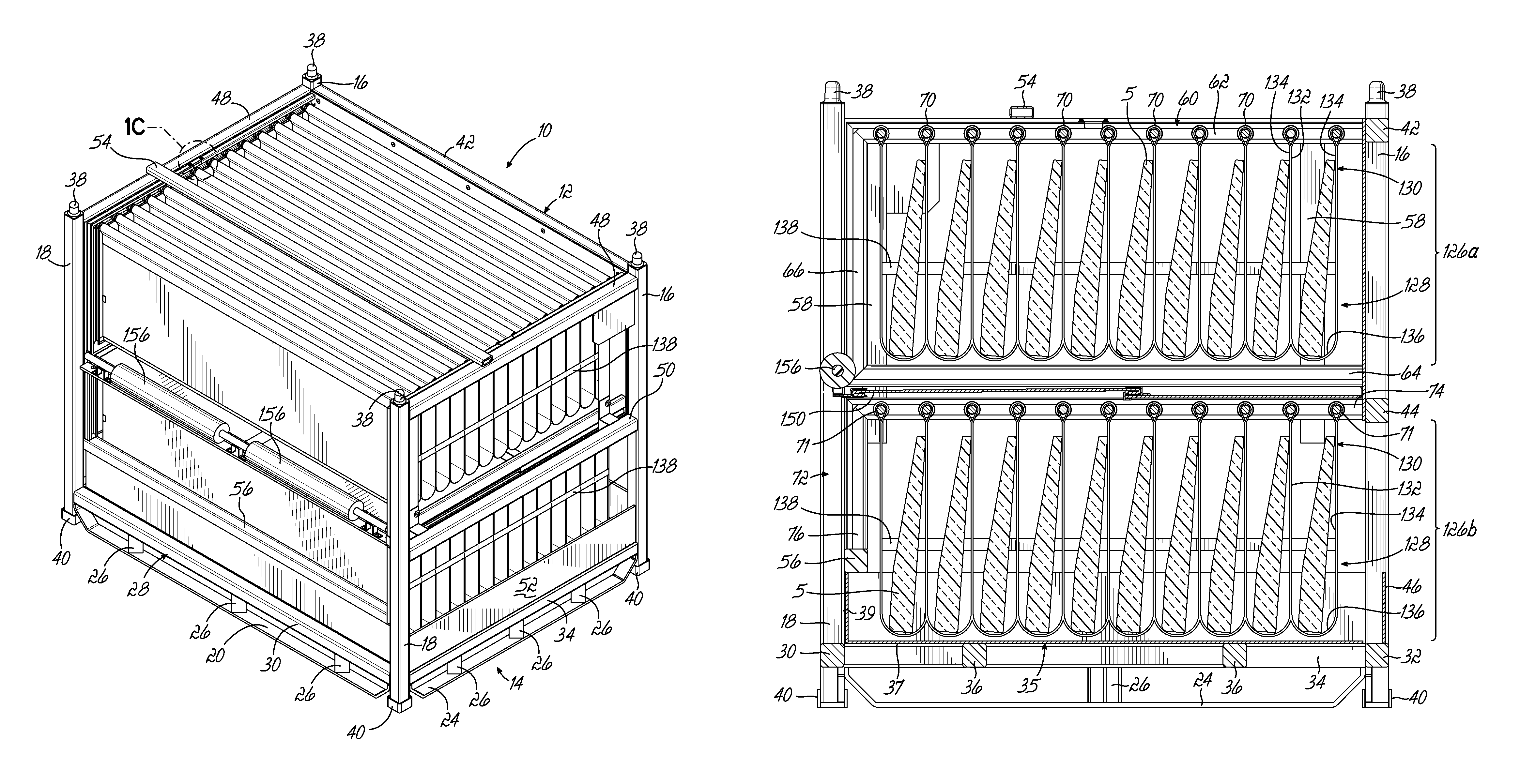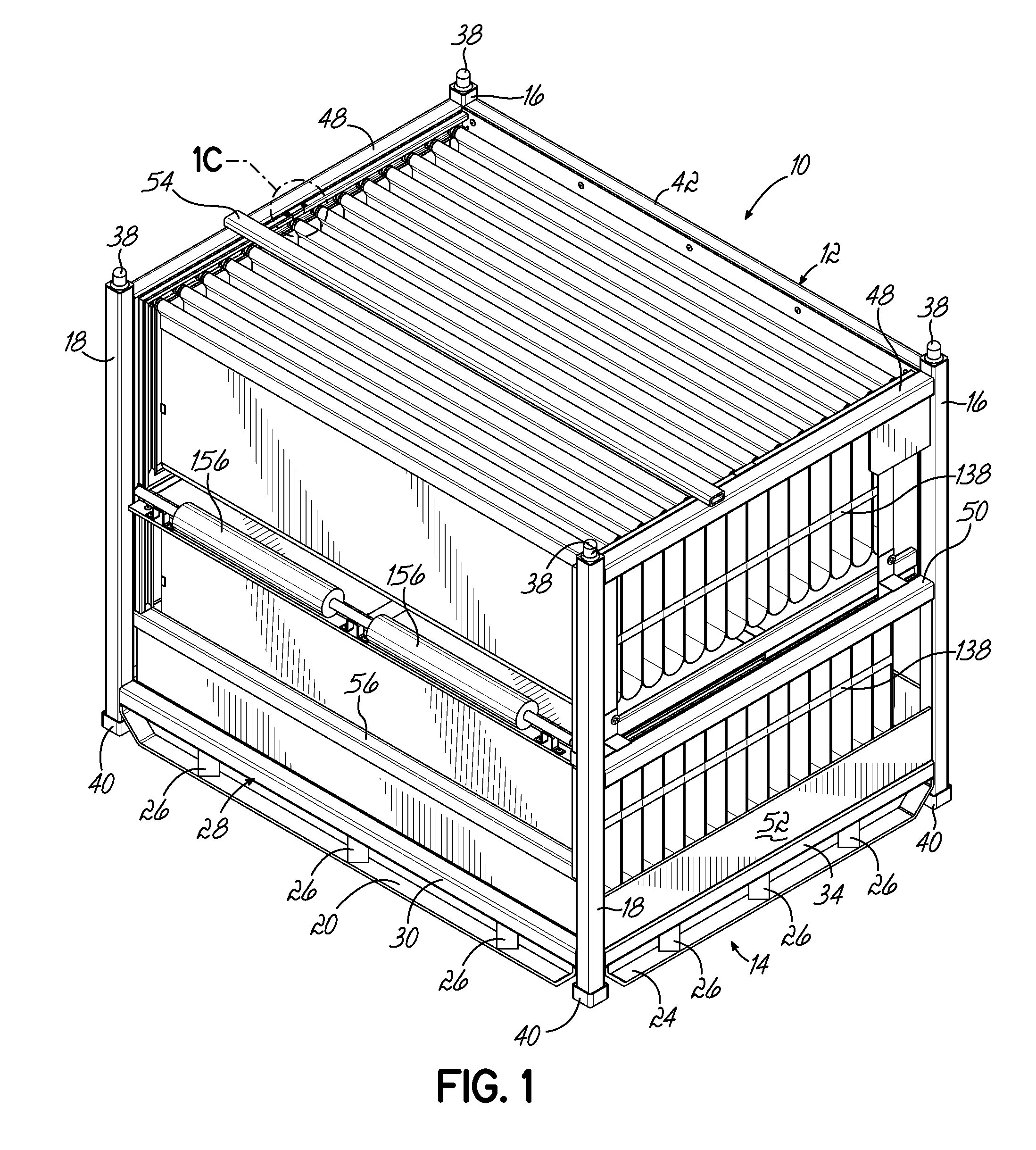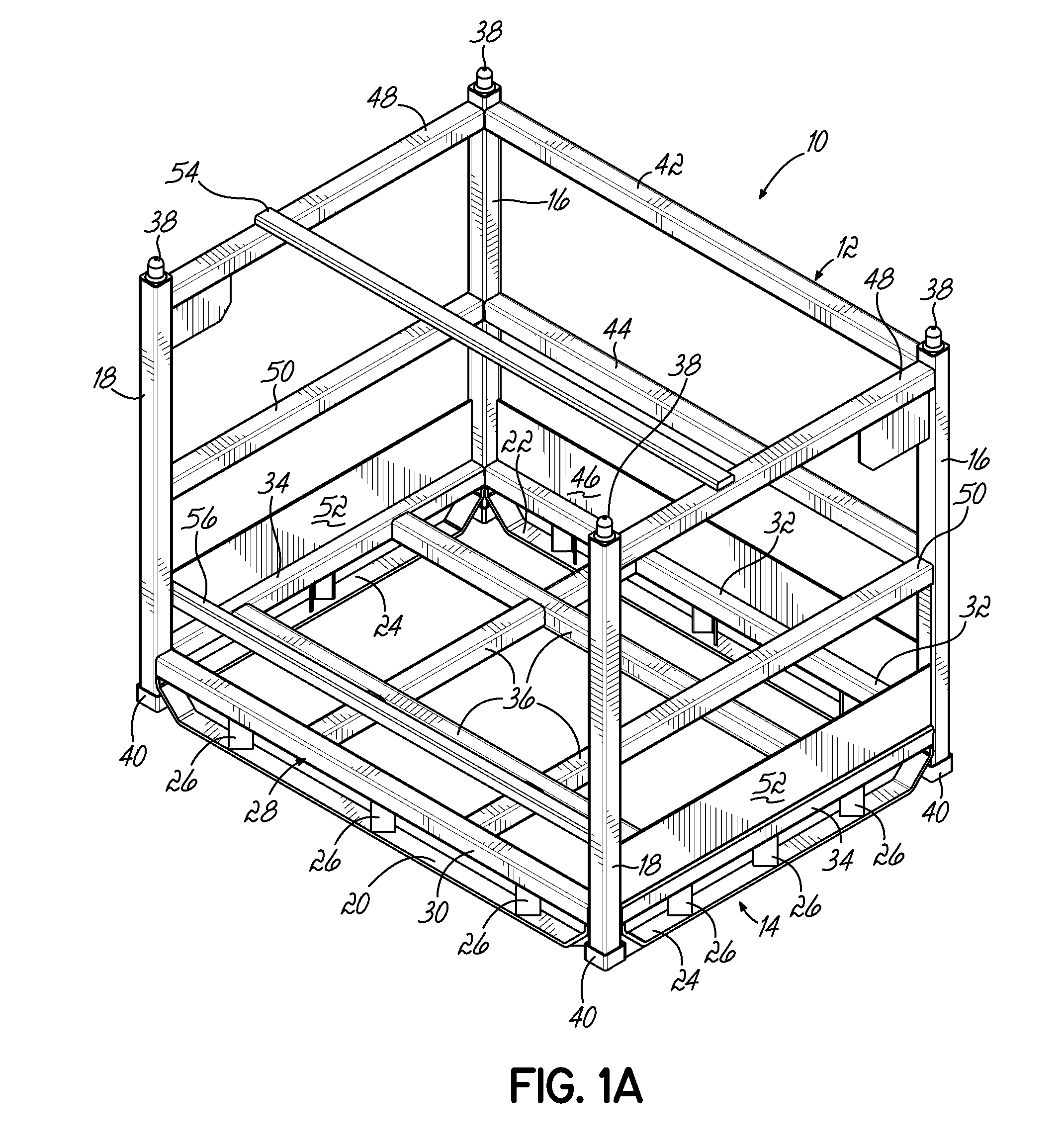Container having non-linear and linear tracks for supporting movable dunnage
a technology of moving parts and containers, which is applied in the direction of transportation and packaging, packaging foodstuffs, and packaged goods. it can solve the problems of unsatisfactory delay in accessing and removing parts from containers, difficult and time-consuming removal of parts therein, and difficulty in accessing, so as to achieve efficient and safe removal, without unnecessary stress or strain on the operator
- Summary
- Abstract
- Description
- Claims
- Application Information
AI Technical Summary
Benefits of technology
Problems solved by technology
Method used
Image
Examples
Embodiment Construction
[0056]Referring to FIG. 1, there is illustrated a reusable and returnable container 10 according to one embodiment. The reusable and returnable container 10, as shown, comprises an outer metal frame 12 having a base 14, two rear corner posts 16 and two front corner posts 18, all four corner posts 16, 18 extending upwardly from the base 14.
[0057]As best shown in FIG. 1A, the base 14 is generally rectangular in shape and comprises a front perimeter member 20, a rear perimeter member 22 and two side perimeter members 24. The perimeter members of the base 14 may be secured together or secured to the corner posts 16, 18 via any conventional means, including welding. A plurality of stubs 26 extend upwardly from the base 14 and are secured thereto via any conventional means, including welding.
[0058]As best shown in FIG. 1A, a generally rectangular sub-base 28 is spaced above the base 14 by the stubs 26 and secured to the stubs 26 by any conventional means, including welding. The sub-base 2...
PUM
 Login to View More
Login to View More Abstract
Description
Claims
Application Information
 Login to View More
Login to View More - R&D
- Intellectual Property
- Life Sciences
- Materials
- Tech Scout
- Unparalleled Data Quality
- Higher Quality Content
- 60% Fewer Hallucinations
Browse by: Latest US Patents, China's latest patents, Technical Efficacy Thesaurus, Application Domain, Technology Topic, Popular Technical Reports.
© 2025 PatSnap. All rights reserved.Legal|Privacy policy|Modern Slavery Act Transparency Statement|Sitemap|About US| Contact US: help@patsnap.com



